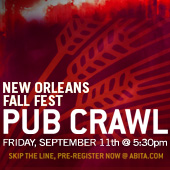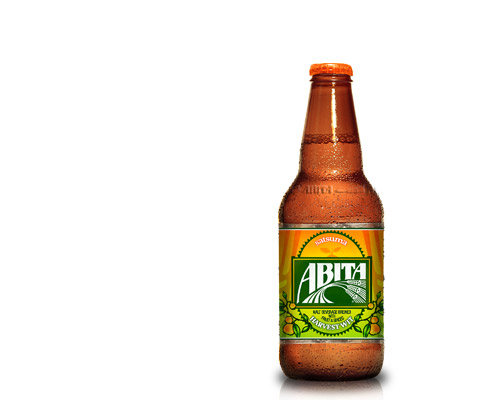
The Brewer’s Association and their associated Craft Beer.com website came to Abbot Kinney Boulevard last Tuesday, and they brought a bevy of brewers with them from all across the country.
Why? Because they want to show that beer should be on the dining table and cooked with at home and at restaurants. Like the Tasting Kitchen in Venice which served up a five course meal that would change even the most light American lager buyers heart. And certainly filled my stomach and changed my way of thinking of pairing beer with food.

The evening started with a hybrid hefe-wit canned by Karbach Brewing in Texas. Weisse Versa took aspects from both styles and created a nice summery beer that was a great way to ease into the evening that was curated by Julia Herz from the Brewer’s Association, Chef Adam Dulye from Monk’s Kettle in San Francisco who is also the culinary consultant for the association and Chef Casey from Tasting Kitchen.
Then the first surprise was unveiled when the first course was accompanied by not one but two beers. Usually it is one beer that is chosen to either “juxtapose” against the dish or “delve” into the flavors with a similar set in the beer. The plan this night was to have each different beer have a hook into a different ingredient or part of the course.

The “a-ha!” example of this was the brown butter ravioli. The Abita Amber from New Orleans tied itself to the caramelization in the pasta and added a level of malty sweetness while the Crystal Bitter from No-Li Brewhouse in Spokane, Washington attached itself to the garlic blossoms in the dish.
It also succeeded to a slightly lesser degree with the Speck and Melon with La Blonde from Ladyface and Colorado Kolsch from Steamworks. And with the Bistecca Fiorentina paired with olive oil and two radically different IPA’s. The Pupil from San Diego’s Societe and a Rye IPA from Harpoon in New England.
This method really showcases the variety of beer more than any expert can do in a book or that I can reiterate over and over in multiple blog posts.. The shortcoming to it is that you get full a lot quicker. Plus it also increases the complexity of choosing the beer for the chef and beer staff. It’s hard enough with so many options available now to pick one that us opinionated beer geeks can agree on.

Food and craft beer was the focus of the evening but the side dish (as it were) was both talking to the brewers and the reps who were there and eavesdropping on them as they struck up conversations with compatriots they had and had not met before. Each brewery was allotted time to talk about the beer that was being presented and about the brewery itself. Though the space upstairs was loud, the opportunity to meet the head brewer at Bridgeport or talk to Mark from Great Lakes about the scene in Cleveland is priceless. And it was great to have Cyrena from Ladyface in the house representing the Los Angeles scene.
I have been reading a history of wine and it is only within the last couple hundred of years that wine became the beverage of choice at restaurants and beer was pushed to ale houses and taverns. And as with much of history it was more by chance and timing and economics than it was due to which would improve a meal.









